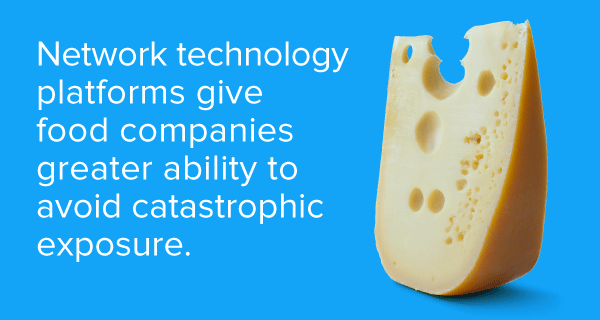Greg Kefer, GT Nexus
The CDC estimates that 48 million Americans get sick from contaminated food each year. Most of the time, these cases go unreported and into the, “I ate something last night that didn’t agree with me,” bucket. But sometimes these food-related illnesses are traced back to a particular company, which can be disastrous.
As an example, consider Chipotle. In late 2015, hundreds in Simi Valley California came down with norovirus. Days later, more people were sickened by Salmonella-tainted tomatoes. And in November, more than 140 students in Boston picked up a nasty virus. These events were all traced to Chipotle restaurants.
In the immediate aftermath, Chipotle revenue decreased 6.8%, same store sales declined by 14%, net income decreased 44%, and the stock price plummeted 39 percent. And worst of all, the brand has never been the same.
Food quality is a supply chain issue
Chipotle got complacent in their quality control. The company relied on a distributed sourcing and production model that allowed stores to tap local food sources. They also promoted the fact that their food was fresh, organic, and free of antibiotics and genetic modifications, which all contributed to the risk of losing control of food quality.
But food quality is also a supply chain problem. When sourcing and shipping perishables, product quality is paramount.
A lot of food is sourced and shipped globally. Ensuring quality requires far more than simply loading goods into a refrigerated container, adjusting the temperature settings, and loading it onto a container ship. There is a chain of custody involving multiple partners that all have a handle in shipping the goods.
Among the many opportunities for failure is in the cold chain because temperature is so important in ensuring a product does not decay. Advanced refrigeration technology in the transport arena is getting more pervasive all the time. But how can a company keep control of goods across every stage of the supply chain? While a large container ship may have excellent cold chain technology, does the last mile delivery truck have the same?
Granular visibility can catch problems before customers do
Network based supply chain visibility systems have gotten very mature in the past few years. These cloud based platforms not only connect partners and companies to a core information set on the status of shipments, but they can also be embellished with data from other devices, such as GPS and Internet of Things (IoT) devices like sensors and mobile apps.
As the product makes its way from the farm to the kitchen shelf, connected technology is collecting and meshing vast pools of information, which provides a literal history book about where the product was grown, how it was grown, who handled it, what temperatures it was exposed to, how long it was in transit, what it was transported with, and more.
Advanced A.I. and machine learning technologies are able to process through these vast data pools (or “lakes”) to help identify at risk products before they are consumed.
There’s a lot of capability emerging, but the foundation is critical. A food company must first set up a network technology platform that connects internal systems and partners.
With the foundation in place, feeding in information from IoT devices begins to build out a product picture, giving food companies much greater ability to avoid a potentially catastrophic exposure.
While no company ever expects to sicken its customers with contaminated product, constant monitoring of the supply chain will go a long way towards avoiding another Chipotle event, or worse.













